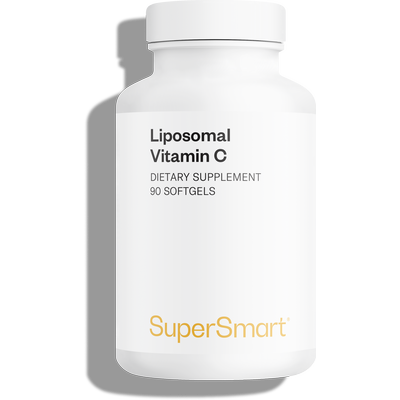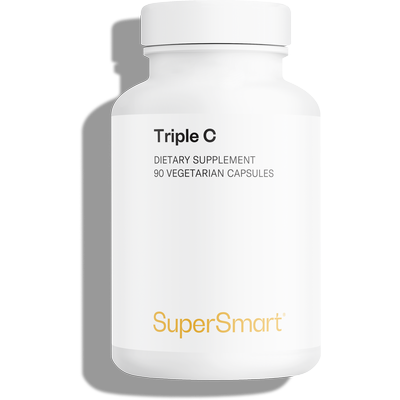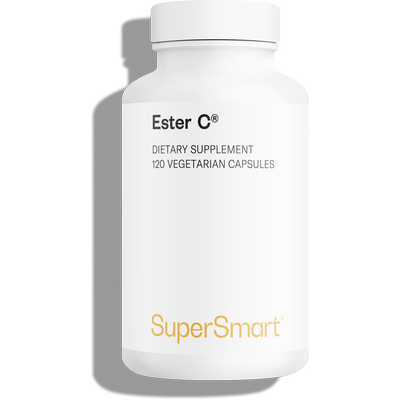10-04-2019
Vitamin C: was Linus Pauling right?
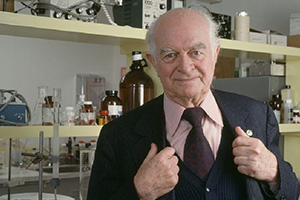 Would you put your faith in a man who was twice awarded the Nobel Prize in two different categories? One of only two people (the other being Marie Curie) to have achieved such a distinction? The answer is almost certainly yes, and yet Linus Pauling had to fight hard for recognition among the medical community of the therapeutic value of vitamin C, the role of which was long-considered to be restricted to preventing scurvy.
Would you put your faith in a man who was twice awarded the Nobel Prize in two different categories? One of only two people (the other being Marie Curie) to have achieved such a distinction? The answer is almost certainly yes, and yet Linus Pauling had to fight hard for recognition among the medical community of the therapeutic value of vitamin C, the role of which was long-considered to be restricted to preventing scurvy.These days, however, scientists are constantly discovering new preventive and therapeutic effects for vitamin C, while its ability to fight oxidative stress is well-established. It seems then that Linus Pauling was decades ahead of his time, yet he did make some incorrect statements which are unfortunately still circulating today.
Why did we lose the ability to produce vitamin C?
Linus Pauling: Humans inherited a degenerative mutation which prevents us from producing our own vitamin C and leaves us dependent on the diet to provide it.
The premise behind Linus Pauling’s statement is not entirely accurate.
It’s true that humans are among the few vertebrates, along with guinea pigs and certain species of bats, to have lost the capacity to freely produce vitamin C1. But this isn’t due to an evolutionary error, or ‘hereditary defect’, as Pauling thought.
Anthropoid primates, from which the great apes and humans evolved, lost the ability to produce vitamin C more than 61 million years ago2.This loss was not the result of a single mutation but of several, all of which occurred in the GLO gene which contributes to the synthesis of a protein (L-gulonolactone-oxidase) essential for producing vitamin C3-5. And these mutations didn’t happen by chance, since they affect only the final step of the process of vitamin C synthesis6.
If these gene mutations continued down the line to humans, it’s because for those that carried them, not being able to produce vitamin C was no longer an evolutionary disadvantage, in contrast to species that continued to synthesise their own vitamin C. In other words, it was not so much a defect as an adaptation to their environment: this loss of ability to synthesise vitamin C paradoxically benefited both the large apes7, and by extension, our extraordinary evolution into human beings.
But how did this loss of capacity work to our advantage?
It’s not entirely clear, but there are two main theories, the first of which is that producing vitamin C uses up a significant amount of energy, and is somewhat redundant if sources of the vitamin are plentiful in the diet8. Scientists have observed that all the species which ceased to produce their own vitamin C did indeed have a diet rich in the vitamin. This is the case for the gorilla (20mg per kg of bodyweight a day), the howler monkey (88mg/kg/day), the fruit bat (258mg/kg/day) and all the other species concerned9. From the point of view of natural selection, this is entirely logical: there’s no point wasting energy producing a molecule which is abundantly available in nature.
The second theory, though not a contradiction of the first, is that when a living being produces vitamin C, it results in the generation of a small amount of hydrogen peroxide10, a highly oxidative compound that contributes to cellular ageing. Therefore, in finding an alternative, reliable means of obtaining vitamin C, those species which lost the ability to produce it themselves were at the same time able to avoid the disadvantages associated with that production.
Those that carried the gene mutation were therefore able to divert the energy conserved to other survival mechanisms, and in so doing, gradually ‘outperformed’ species that continued to self-produce11. Of course, this advantage only applies when the diet is rich in vitamin C – which was the case three million years ago when the first members of the genus Homo appeared.
But what about today, now that our whole environment has changed and we barely manage to eat three portions of fruit and vegetables a day?
Pauling was right on this point: our current intake of vitamin C (1-2mg/kg/day) is probably well below that of early man and thus well below optimal levels.
How much vitamin C do we actually need?
Linus Pauling: It’s not for nothing that other vertebrates produce significant levels of vitamin C: living organisms don’t normally waste energy resources unnecessarily. We should therefore be ingesting mega-doses (10g or more) of vitamin C if we want to get closer to the amount produced by these other mammals, and gain maximum benefit from the vitamin.
Linus Pauling was obsessed by the question of whether there is an ideal intake of vitamin C for humans. In attempting to find an answer, we must first remember that the loss of vitamin C-producing ability occurred over 60 million years ago, while the first representatives of the Homo genus did not appear until around three million years ago. This is a significant gap, during which innumerable mutations could have taken place.
Natural selection means that species need to continually adapt to their environment: organisms whose survival depends on highly precarious or random variables (such as unreliable sources of food) are thus at constant risk of extinction, to the detriment of other, more adaptable organisms. It’s therefore inconceivable that all the descendants of species which lost the capacity to produce vitamin C retained the same physiological mechanisms12. New strategies evolved to minimise the importance of vitamin C for survival, such that those concerned no longer need huge quantities of fruit and vegetables and are able to survive periods of scarcity (which result from climate phenomena, natural disasters, glaciation, etc.).
Thus a mechanism was recently discovered which limits the absorption of vitamin C in humans such that however much is ingested, plasma concentrations never exceed 80 μmol/L13. In other words, whether you take 2g or 10g of vitamin C, the amount in your blood will be the same. So what is the optimum intake? It actually depends on a number of factors but scientists estimate that maximum blood levels are achieved from intakes of between 400mg and 1g. Which is well below the levels of mammals that produce their own vitamin C…
So Linus Pauling was wrong on this point too, but can we really blame him?
How can we obtain sufficient quantities of vitamin C each day?
Even though humans may have adapted to managing with lower blood levels of vitamin C than other mammals, we still need the vitamin in order to function properly and prevent disease. Unfortunately, current dietary intakes are much too low14 to stand any real chance of benefiting from vitamin C’s effects: between 40% and 60% of the French population, for example, are thought to have blood levels of less than 23 µmol/L15 – sufficient to prevent scurvy but far from the optimal level of 80 μmol/L.
To achieve such a concentration, an intake of around 700mg is considered necessary (preferably spread across the day). But how can we reach this level when most people scarcely exceed 110mg a day? One way is to eat around a dozen portions of fruit and vegetables daily - fresh, organic and raw whenever possible. This clearly requires resolute commitment and organisation, which is not always compatible with our lifestyles.
Hence the increasing numbers of individuals who, like Linus Pauling, are turning to vitamin C supplements.
They offer an excellent alternative, provided you choose supplements that are free from additives, sugar, flavour-enhancers and artificial colourings, ideally taking them alongside natural flavonoids (which increase vitamin C absorption), and that you opt for buffered forms (such as sodium ascorbate, calcium ascorbate or magnesium ascorbyl phosphate) which are less acidic on the stomach than ascorbic acid. Take your time when choosing, as there are very few supplements that meet all these criteria, apart from Triple C (a synergistic combination of three forms of vitamin C) and Liposomal Vitamin C or Asc2P (which delivers a smaller amount and can thus be spread across the day).
References
1. Guy Drouin, Jean-Rémi Godin, Benoît Pagé. The Genetics of Vitamin C Loss in Vertebrates. Curr Genomics. 2011 August; 12(5): 371–378.
2. Lachapelle MY, Drouin G. Inactivation dates of the human and guinea pig vitamin C genes. Genetica. 2011;139:199–207.
3. Nishikimi M, Kawai T, Yagi K. Guinea pigs possess a highly mutated gene for L-gulono-gamma-lactone oxidase, the key enzyme for L-ascorbic acid biosynthesis missing in this species. J. Biol. Chem. 1992;267:21967–21972.
4. Nishikimi M, Fukuyama R, Minoshiman I, Shimizux N, Yagis K. Cloning and chromosomal mapping of the human non-functional gene for L-gulono-gamma-lactone oxidase, the enzyme for L-ascorbic acid biosynthesis missing in man. J. Biol. Chem. 1994;269:13685–13688.
5. Ohta Y, Nishikimi M. Random nucleotide substitutions in primate nonfunctional gene for L-gulono-γ-lactone oxidase, the missing enzyme in L-ascorbic acid biosynthesis. Biochim. Biophys. Acta. 1999;1472:408–411.
6. Linster CL, Van Schaftingen E. Vitamin C biosynthesis, recycling and degradation in mammals. FEBS J. 2007;274:1–22.
7. Lachapelle MY, Drouin G. Inactivation dates of the human and guinea pig vitamin C genes. Genetica. 2011;139:199–207.
8. Pollock JI, Mullin RJ. Vitamin C biosynthesis in prosimians: Evidence for the anthropoid affinity of tarsius. Am. J. Phys. Anthropol. 1987;73:65–70.
9. Milton K, Jenness R. Ascorbic acid content of neotropical plant parts available to wild monkeys and bats. Experientia. 1987;43:339–342.
10. Bánhegyi G, Csala M, Braun L, Garzó T, Mandl J. Ascorbate synthesis-dependent glutathione consumption in mouse liver. FEBS Lett. 1996;381:39–41.
11. Pollock JI, Mullin RJ. Vitamin C biosynthesis in prosimians: Evidence for the anthropoid affinity of tarsius. Am. J. Phys. Anthropol. 1987;73:65–70.
12. Drouin G, Godin JR, Pagé R. The Genetics of Vitamin C Loss in Vertebrates, Curr Genomics. 2011 Aug; 12(5): 371–378. doi:10.2174/138920211796429736
13. Balz Frei, Ines Birlouez-Aragon & Jens Lykkesfeldt (2012): Authors' Perspective: What is the Optimum Intake of Vitamin C in Humans?, Critical Reviews in Food Science and Nutrition, 52:9, 815-829
14. Touvier, M., Lioret, S., Vanrullen, I., et al. (2006). Vitamin and mineral inadequacy in the French population: Estimation and application for the optimization of food fortification. Int J Vitam Nutr Res. 76: 343–351.
15. Hercberg, S., Preziosi, P., Galan, P., et al. (1994). Vitamin status of a healthy French population: dietary intakes and biochemical markers. Int J Vitam Nutr Res. 64: 220–232
Order the nutrients mentioned in this article
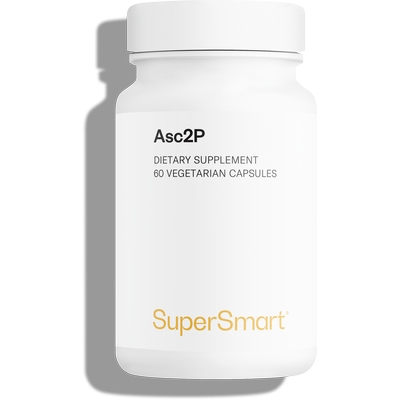
A stable and potent form of vitamin C that can penetrate cells, and that maintains telomere length
www.supersmart.comFurther reading
28-06-2017
As the control centre of the central nervous system, the brain has to deal with a constant flow of data, processing millions of bytes of...
Read more30-04-2018
A newly-published study in The Journal of the American Osteopathic Association shows that the body may be unable to make proper use of vitamin D...
Read more06-05-2019
Though often overlooked, vitamin E actually plays an essential role in the body; indeed, a lack of vitamin E may be responsible for the development...
Read more© 1997-2025 Fondation pour le Libre Choix
All rights reserved
All rights reserved
Free
Thank you for visiting our site. Before you go
REGISTER WITHClub SuperSmart
And take advantage
of exclusive benefits:
of exclusive benefits:
- Free: our weekly science-based newsletter "Nutranews"
- Special offers for club members only



